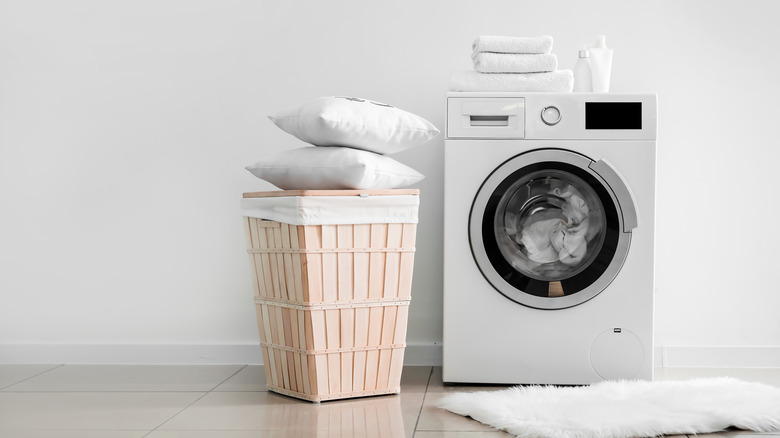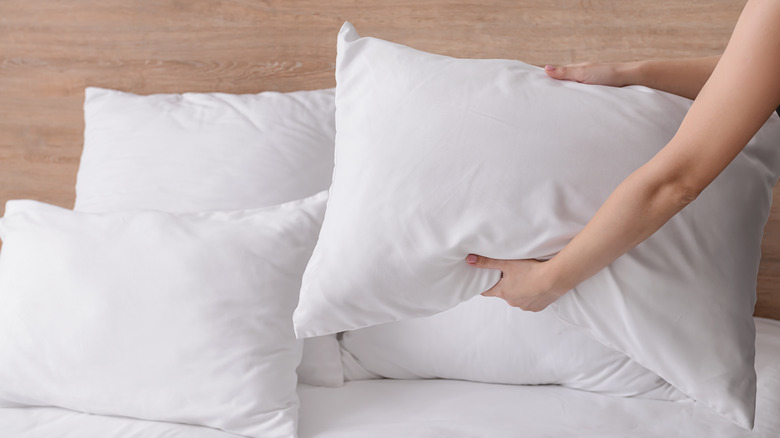
There’s no two ways around it: pillows can get pretty gross. Between night sweats, drool and oils from your skin, your pillowcases can be no match for germs. With just a thin barrier between your head and your pillow, bacteria can build up rather easily. Plus, dust mites can come out in full force to greet your scalp each night.
“Because pillows come in such close contact with your face and tend to breed allergens, they should be washed two to three times per year, and even more frequently if you live in a warm, humid climate — warmth is a breeding ground for dust mites,” cofounder of The Laundress, Lindsey Boyd tells Well+Good. Turns out, those little flaps that don’t fully cover your cushions are to blame. “A good way to protect them better is with pillow covers, which go over your pillows and beneath your pillow cases and have zippered enclosures,” Gwen Whiting adds. “These should be washed on a monthly basis.”
If you don’t have pillow covers and have yet to wash your pillows, you’re certainly not alone. But, keeping them clean should be high on your list of priorities. Set your wash machine to the lowest, most gentle setting with cold water, the outlet recommends, then spin them on a medium to low speed. You may need to do two cycles here.
When it’s time to dry, you’ll need to run your microfiber pillows through on low heat as many times as it takes to remove all the moisture. The outlet explains that even the slightest water residue can make way for mildew.
You should wash your pillows at least once a year

As for the frequency at which your pillows should go through the spin cycle, Anna Harasim, founder of Anna’s Cleaning Service, tells Health that once a year should be the bare minimum of the process. Of course, the way that you cleanse depends on the type of pillows you sleep on. For instance, memory foam cushions should never go in the wash machine — you’ll need to hand wash these. Use your vaccuum hose to remove any dust directly on the pillow insert. The covering can go through the wash while the vacuum removes any dust mites.
Your feather and down pillows require a little more care. “Check the fabric for any tears first,” Harasim notes. “If any feathers are getting out, it’s best not to wash the pillow in the washer.” From here, it’s just a quick rinse cycle on gentle and a few rounds in the dryer and they’re set to go. Just be sure to go easy on these pillows, they don’t last as long after they’ve been processed too many times. Your pillows may also have a care label attached, Good HouseKeeping reports, so take a look and see if they have any specific instructions before you toss them in the washer.
But, the bottom line is that you should do your best to clean them once a year or once every six months. Opting for pillow protectors can make this process easier as well.
Source: Read Full Article
